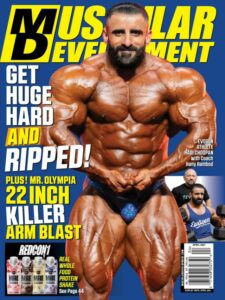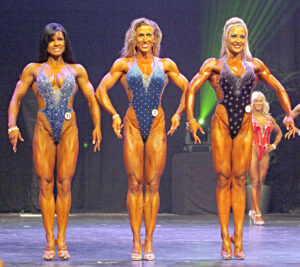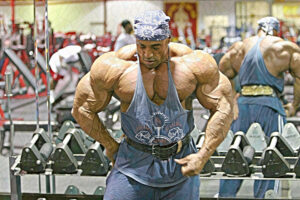The Strength Sensei on Off-Season Bulking
The facts and falsehoods about getting in top shape
One of the most challenging tasks for a professional bodybuilder is being at the lowest possible bodyfat with the greatest amount of muscle mass during the competition. Often you hear about bodybuilders who looked great in the pre-judging and “flat” during the evening show. Hadi Choopan is one IFBB pro who has mastered this challenge, and this year his superior conditioning earned his bodybuilding’s biggest title, Mr. Olympia.
The Strength Sensei was not only a bodybuilding fan but was directly involved in the sport, working with many elite pro bodybuilders during his career. He says that in the early years of pro bodybuilding, many men would make the mistake of “bulking up,” gaining muscle and large amounts of fat. Case in point: Lou “The Incredible Hulk” Ferrigno. The difference? Conditioning.
When he was 20, Ferrigno consumed up to eight meals daily, consuming eight to 10 thousand calories daily. It worked, enabling him to get bodyweight to 300 pounds at age 20. At the 1975 Mr. Olympia where he was featured in Pumping Iron, he dropped about 30 pounds. However, he was still 30+ pounds heavier than Arnold Schwarzenegger, the eventual winner. What’s more, Serge Nubret, who was much lighter than Arnold, beat Ferrigno.
Another example of an athlete who had trouble peaking was Sergio “The Myth” Oliva. Oliva had unprecidented symmetry with thighs bigger than his waist and arms bigger than his head. What Oliva didn’t have was conditioning, which was evident in 1971 when he got beat for the NABBA Mr. Universe by 41-year-old Bill Pearl. The Strength Sensei said Oliva would be considered fat by today’s standards.
 Hadi Choopan’s ability to compete in peak condition paid off last year with his victory in the Mr. Olympia.
Hadi Choopan’s ability to compete in peak condition paid off last year with his victory in the Mr. Olympia.
While it’s cool to see just how big bodybuilders can get. Two-time Mr. Olympic Mamdouh “Big Ramy” Elssbia lived up to his name in the off-season last year and tipped the scales to 341 pounds! However, the Strength Sensei thought it was a bad idea. By the way, the defending Olympia champ Big Ramy was relegated to 5th place this year and appeared well off the conditioning level he displayed the previous two years.
One bulking up/cutting down story the Strength Sensei liked to tell that of the remarkable strongman and bodybuilder was Bruce Randall. Randall stood 6-feet-2. Between January 3, 1953, and August 2, 1955, he bulked up to 401 pounds. They say breakfast is the most important meal. Here was his standard breakfast:
- 28 fried eggs
- 1 ½ loaves of bread
- 2 quarts of milk
How much of this weight was muscle? Well, quite a lot, as he could barbell curl 228 pounds and pump out two reps in the dumbbell bench press with 220 pounds. And despite an accident where he broke his leg in seven places, Randall squatted 680, deadlifted 770, a 1/4 front squat with 1,320 pounds, and 1/4 back squat with 2,100 pounds. He also established the standard in posterior chain strength with a rounded back good morning with 685 pounds.
Those lifts checked off his bucket list, and Randall decided to focus on bodybuilding and lost 218 pounds in 32 weeks. In 1959, they captured the NABBA Mr. Universe title weighing 222 pounds. Although this was considered a feat that would never be duplicated, consider that 400-pound strongman Eddie Hall, the first to deadlift 500 kilos/1102 pounds, says he will try bodybuilding. It will be interesting.
Whereas there is interest in seeing how big male bodybuilders can get in the off-season, bulking up is not a good decision for female physique, figure, or bikini competitors. Further, it’s much more challenging for a female to get lean than a male, so it’s best not to stray too far away from their competition bodyweight.
 Women physique, figure, and bikini competitors need to avoid large fluctuations in bodyweight in the off-season. (This photo and lead photo by Miloš Šarčev)
Women physique, figure, and bikini competitors need to avoid large fluctuations in bodyweight in the off-season. (This photo and lead photo by Miloš Šarčev)
On the science side of this topic, once you add a fat cell, you’re stuck with it. You can make them smaller, but liposuction is the only permanent solution. The bottom line is to lose the fat then gain the muscle. (TSS)

